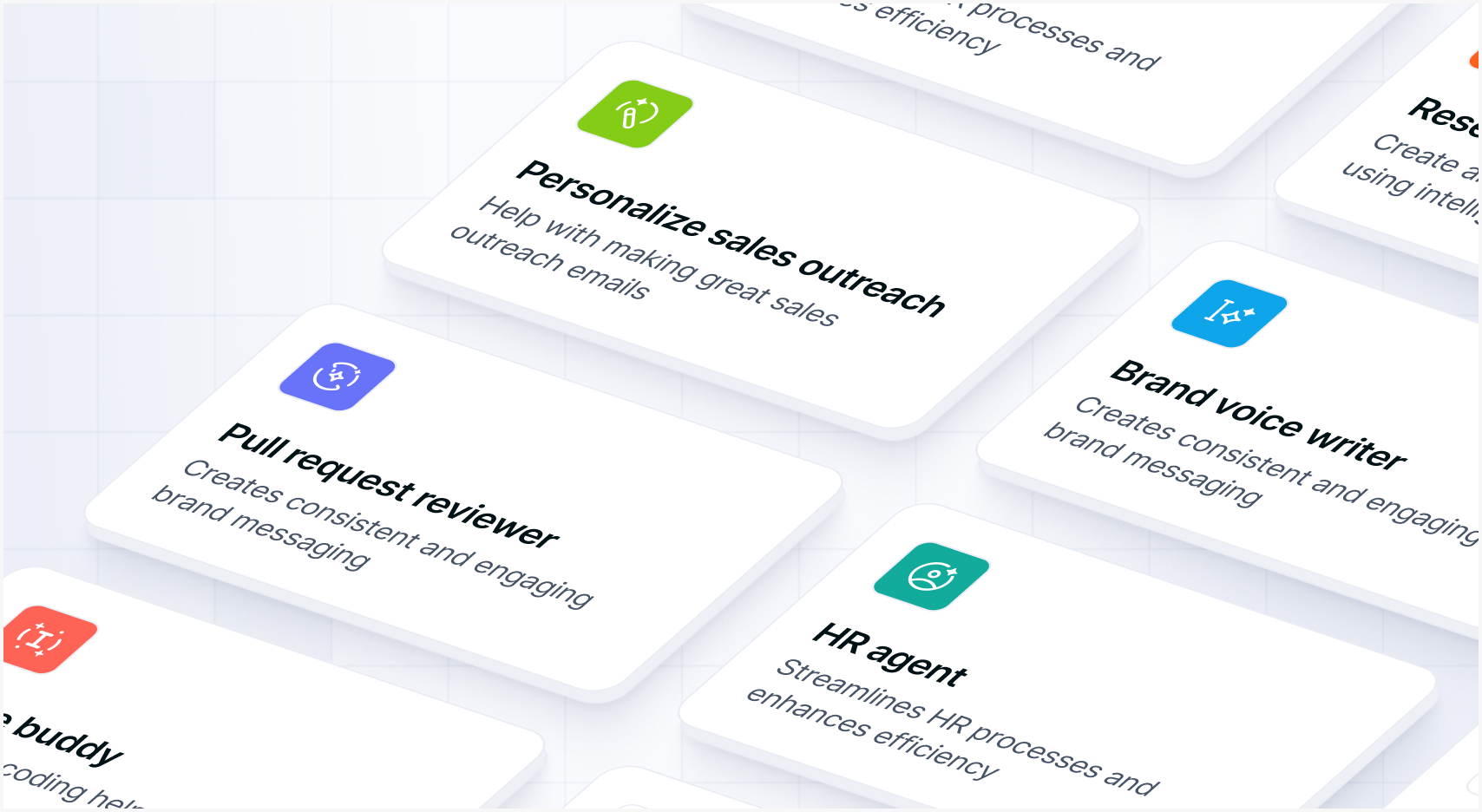
Meet FuseBase AI Agents — your Dream Team of executive assistants that work 24/7
- 3 Min read
When I first started exploring AI, I kept hearing the term agent thrown around but no one seemed to explain what it actually meant. It was everywhere.
On product pages, in pitch decks, in demo calls. “We use agents for this,” “our agents can do that,” and yet… no real explanation of what an agent actually is.
So, I started digging.
Why the surge? Because they’re not just chatbots, they’re changing how businesses operate, automate, and scale.
This article is the guide I wish I had when I started, a clear breakdown of what AI agents actually are, what makes them different from just another chatbot, and how they work behind the scenes. I’ll also show you how we’re using a custom AI agent at FuseBase to automate workflows, streamline onboarding, and make the experience better for our users.
“I’ve taken the secure, branded portals you already love and turbo-charged them with always-on AI Agents that live inside your FuseBase workspace, inside every client portal, inside a lightning-fast browser extension, and inside our Zapier-style Automation Hub.” – Pavel Sher, FuseBase CEO
By the end, you should have a solid understanding of how AI agents work and more importantly, how to think about using one in your own product or workflow.
Think of it like this: if ChatGPT is a really smart assistant you have to prompt manually, an AI agent is the assistant that already knows what you want and just gets to work. It doesn’t wait around for you to ask. It observes, plans, and executes (on its own).
But not all agents are built the same. Most are made up of a few key components:
If you’ve used tools like AutoGPT, you’ve seen this in action, though in a more experimental (and sometimes chaotic) way. More modern agent frameworks are a lot more focused, stable, and useful in production environments.
In short: AI agents aren’t just there to respond, they’re built to act.
| What It Is | How It’s Different from AI Agents | |
|---|---|---|
| Agentic AI | Systems that can pursue goals and make decisions (AI agents are one implementation of this). | Agentic AI is a category. AI agents are a practical application of it. |
| LLM (Large Language Model) | A powerful language engine like GPT-4 or Claude. | LLMs power AI agents, but they don’t act on their own. Agents add memory, goals, tools, and reasoning layers. |
| Workflows | Predefined step-by-step processes (manual or automated). | Agents can trigger and modify workflows dynamically based on new inputs. |
| Gen AI (Generative AI) | AI that creates content (text, images, code, etc.) | Agents can use Gen AI but they also act, plan, and interact with systems and people. |
| Chatbots | Respond to questions using pre-set flows or scripts. | Agents go beyond conversation they can reason, act, and trigger follow-ups. |
| ChatGPT | A specific LLM developed by OpenAI. | GPT can power an agent’s brain, but it needs a “body” (tools, memory, planning) to become an agent. |
| RAG (Retrieval-Augmented Generation) | A method for improving LLM responses with external data. | RAG can be part of an agent’s toolkit, but isn’t an agent itself. |
Think of an AI agent as the colleague who never sleeps, never forgets, and never says, “that’s not my job.”
At a high level, an AI agent:
But that’s still abstract. Let’s make it practical. Here’s what AI agents actually do inside modern teams:
| Task Type | What the Agent Does |
|---|---|
| Sales | Researches accounts, drafts personalized outreach, updates CRM, flags deal risks |
| Marketing | Generates blog posts, summarizes customer insights, builds campaign briefs |
| Customer Success | Creates onboarding plans, answers client questions in the portal, preps QBRs |
| Internal Ops | Drafts SOPs, routes approvals, sends follow-up emails from meetings |
| Product & Engineering | Writes documentation, summarizes bug reports, suggests sprint improvements |
Unlike a traditional chatbot or GenAI tool, an agent doesn’t just wait for instructions, it can monitor data, take initiative, and carry out tasks across tools and spaces.
It’s the difference between asking ChatGPT to “write a blog post”… and having an AI teammate that:
That’s what AI agents do.
“When we first started building FuseBase, the goal was simple: help teams and clients collaborate better through shared workspaces. But the more we worked with fast-moving B2B teams, the clearer it became, people didn’t just want portals. They wanted progress.”
– FuseBase Team
That’s when we asked ourselves: What if AI could move work forward, no matter where it starts, browser, portal, doc, or CRM?
That’s exactly what FuseBase Agents do.
Instead of building a dozen disconnected tools, we created one system of AI Agents that live across your entire workflow. You can deploy them anywhere:
FuseBase Agents work like extra teammates, only faster, always on, and already trained on your workflows and brand. Here’s what it looks like in action:
And we’re just getting started. By the end of May 2025, we’re launching MCP Integrations, so your agents can also run across tools like Salesforce, HubSpot, Notion, and more.
The big idea? You don’t need one AI for writing, another for research, another for docs, and five others duct-taped together.
You need one brain with many bodies. That’s what we built.
When I first started working with AI Agents, I assumed they were just smarter chatbots. Turns out, they’re made of several components each doing something important to make the agent feel more like a teammate than a tool.
Here’s a breakdown of the key components behind every FuseBase Agent:
1. Goal (or Intent)
Every agent starts with a clear job to do, like writing a cold email, analyzing a meeting, or researching a lead. That’s its primary objective, and everything else flows from that.
2. Memory & Context
Agents work best when they’re not starting from zero. Ours can access CRM entries, past conversations, brand guidelines, and other workspace data so they speak your language and stay accurate.
3. Reasoning Engine
This is the AI “brain,” a large language model (like GPT-4) or a blend of models that interprets inputs, plans what to do next, and generates helpful outputs.
4. Tools & Actions
Agents aren’t just answering questions, they’re doing the work. That includes generating documents, updating records, kicking off workflows, or fetching the right file from a portal. Think: action, not just text.
5. Interface
You need a way to use the agent. That might be chat inside a FuseBase portal, a browser extension, or an embedded widget. It’s how you (or your clients) actually interact with the AI.
“Once I understood these components, the idea of “deploying an agent” finally clicked. You’re not just turning on a bot, you’re assigning a role, giving it tools, and setting it loose in the right place.” – Pavel Sher, FuseBase CEO
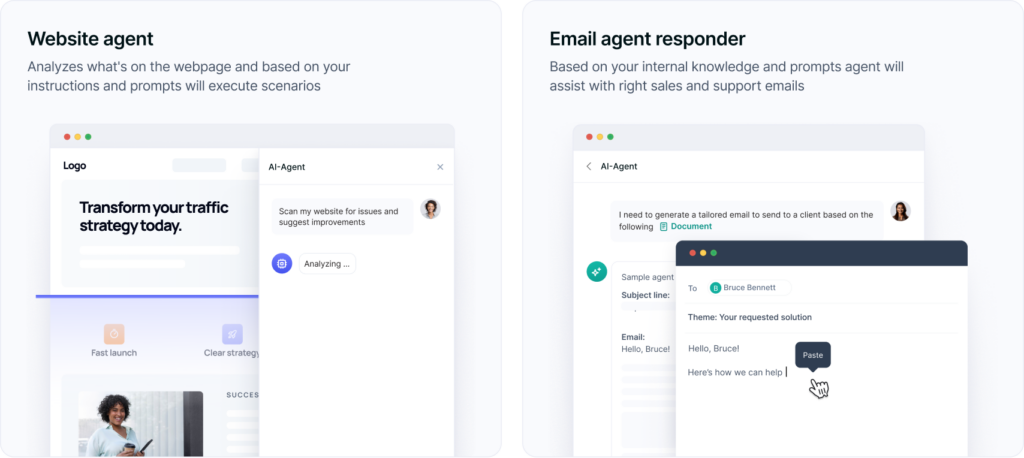
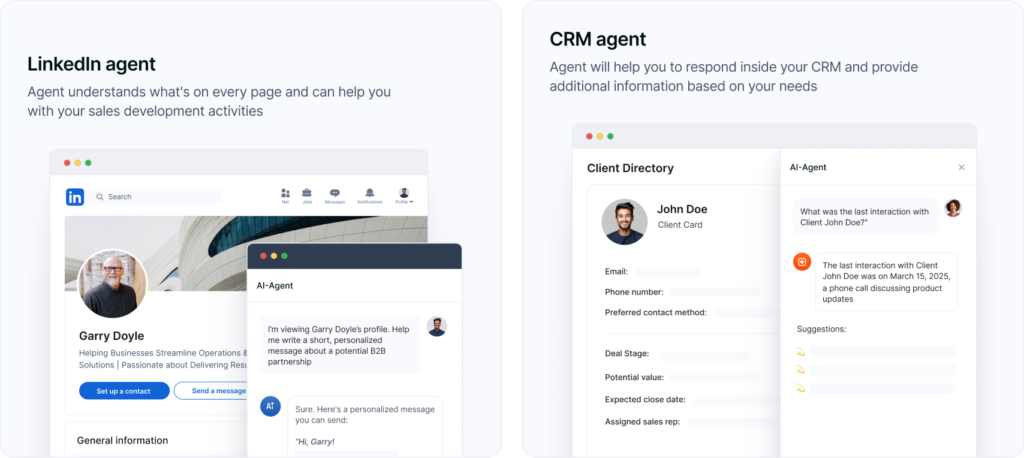
When I first explored other “AI tools,” I kept running into the same thing:
It felt like juggling ten half-smart tools that didn’t talk to each other, or worse, didn’t understand the actual work I needed done.
That’s why I built FuseBase Agents to be fundamentally different.
Instead of isolated bots, you get a connected system of AI Agents, all sharing one brain, trained on your workflows, and deployed wherever work happens.
Here’s what sets them apart:
1. Built into your actual work
FuseBase Agents aren’t floating off in a sandbox. They live inside your workspaces, inside your client portals, on your web pages, and right in your browser.
2. Secure, brand-aligned, and permission-aware
Every Agent follows your workspace’s data rules. It won’t surface the wrong doc to the wrong client or spit out generic support. It knows who’s asking, what they can access, and how to speak in your tone.
3. One Agent, many roles
You create an Agent once, say, a “Sales Assistant.” Then you can use it to:
→ coach your reps in their workspace
→ score leads in your Sales Portal
→ generate outreach from LinkedIn
→ follow up automatically via the Automation Hub
→ and surface relevant docs in your Client Portal
4. Automations, not babysitting
We also built a no-code Automation Hub where Agents can trigger actions, route approvals, update records, and collaborate with tools like Zapier (and soon, direct MCP integrations). Think of it as your workflow autopilot with Agents driving.
1. Sales & Customer-Success Assistant (Browser + Portals)
Drafts personalized outreach, proposes next steps, and handles FAQs on autopilot.
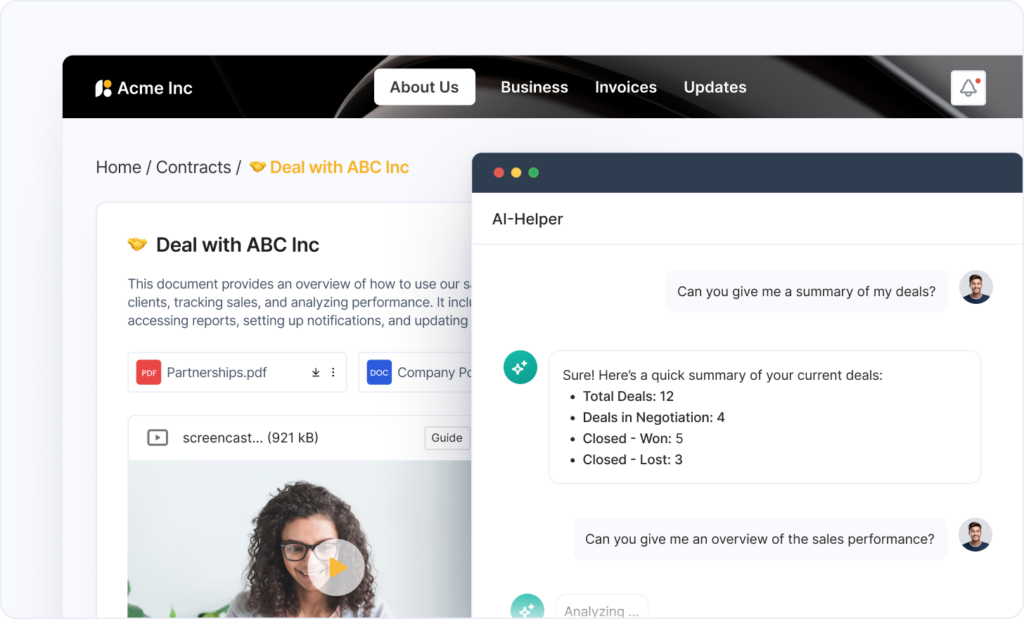
2. LinkedIn Scraper (Browser)
Analyzes profiles and companies, extracts contacts, and pushes insights to your CRM.
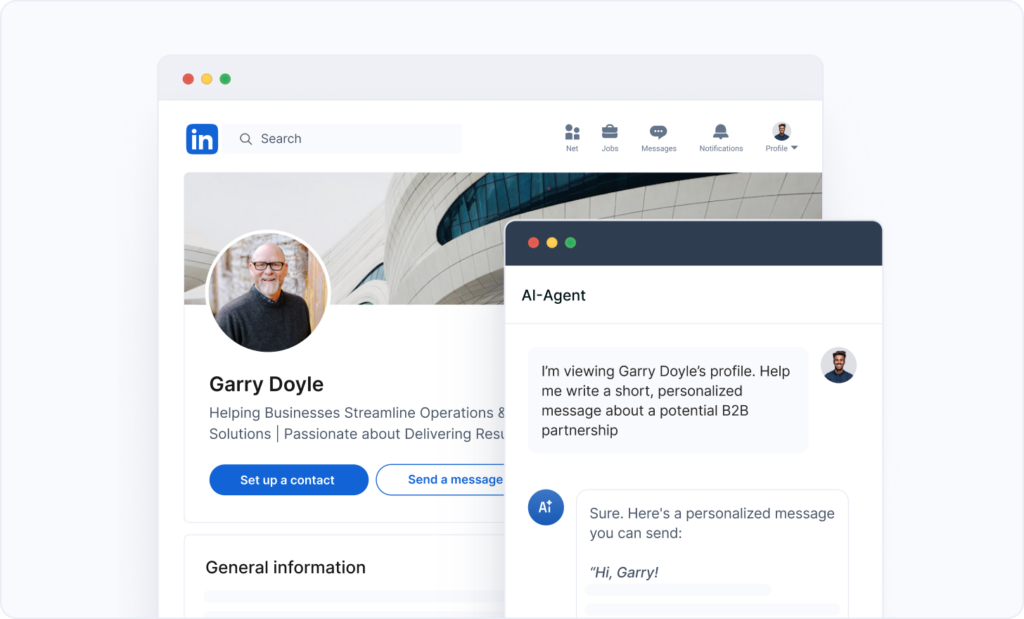
3. Department-Specific Agents for Portals
Spin up a Finance, Marketing, or Support Agent, each with its own SOPs, data, and workflows.
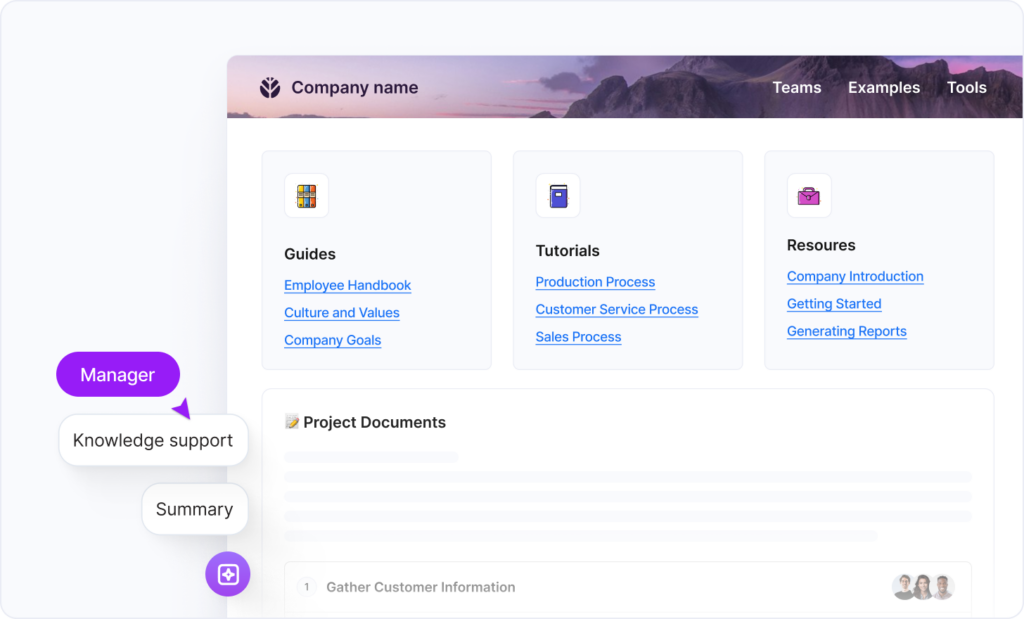
4. Task-Specific Agents
Invoice validator, deployment checklist runner, renewal-risk detector tailored for your exact process.
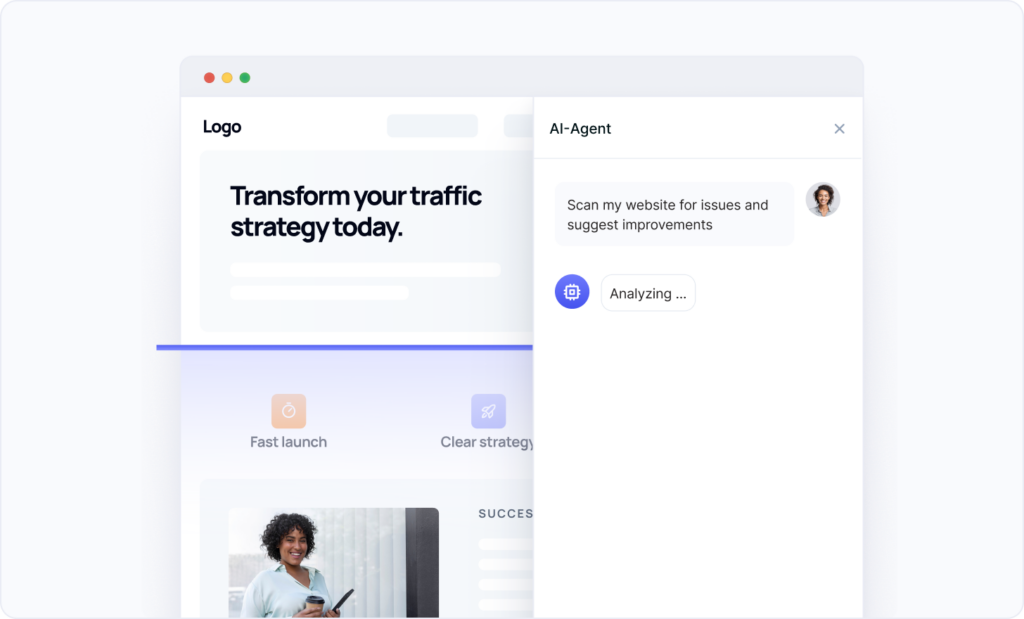
We’re just getting started.
By the end of May, we’ll have launched MCP Integrations for Agents, that means your Agents will soon be able to pull from and push to your most critical systems: CRMs, support tools, analytics platforms, and more. Imagine an agent that not only drafts a proposal, but also syncs it to Salesforce, pings your Slack, and schedules a follow-up automatically.
“We’re also expanding agent templates and training tools, so you can build your own agents without prompt engineering headaches. Customize tone, define boundaries, and connect actions with zero code.” – FuseBase Team
FuseBase is becoming the operating system for AI agents across your internal ops and client-facing experiences. One brain, deployed everywhere.
Found it useful? Share the article with your community
Get weekly tips and insights on how to grow your business